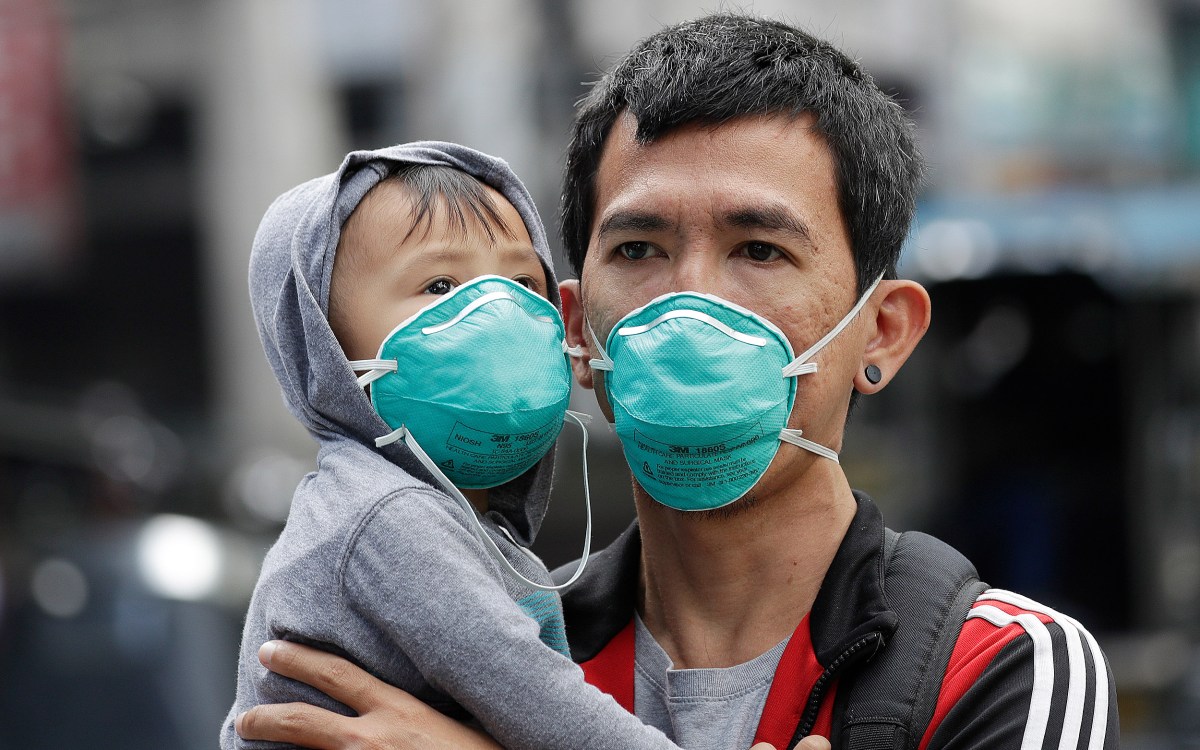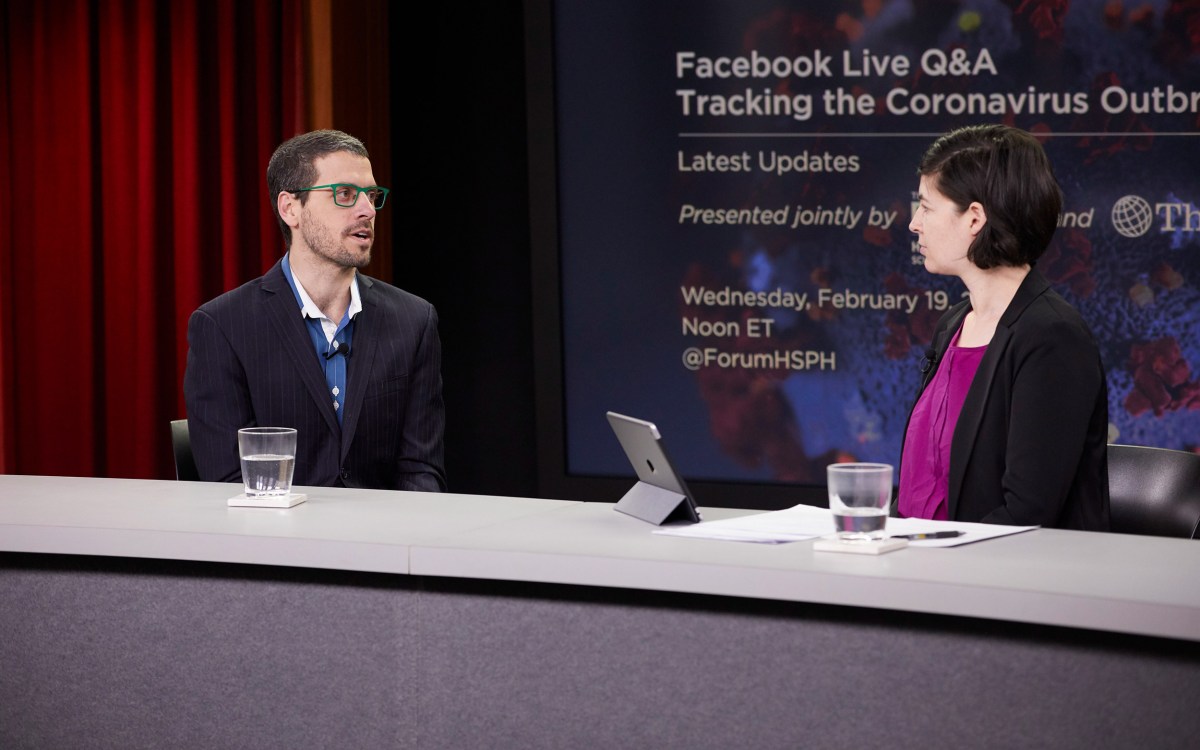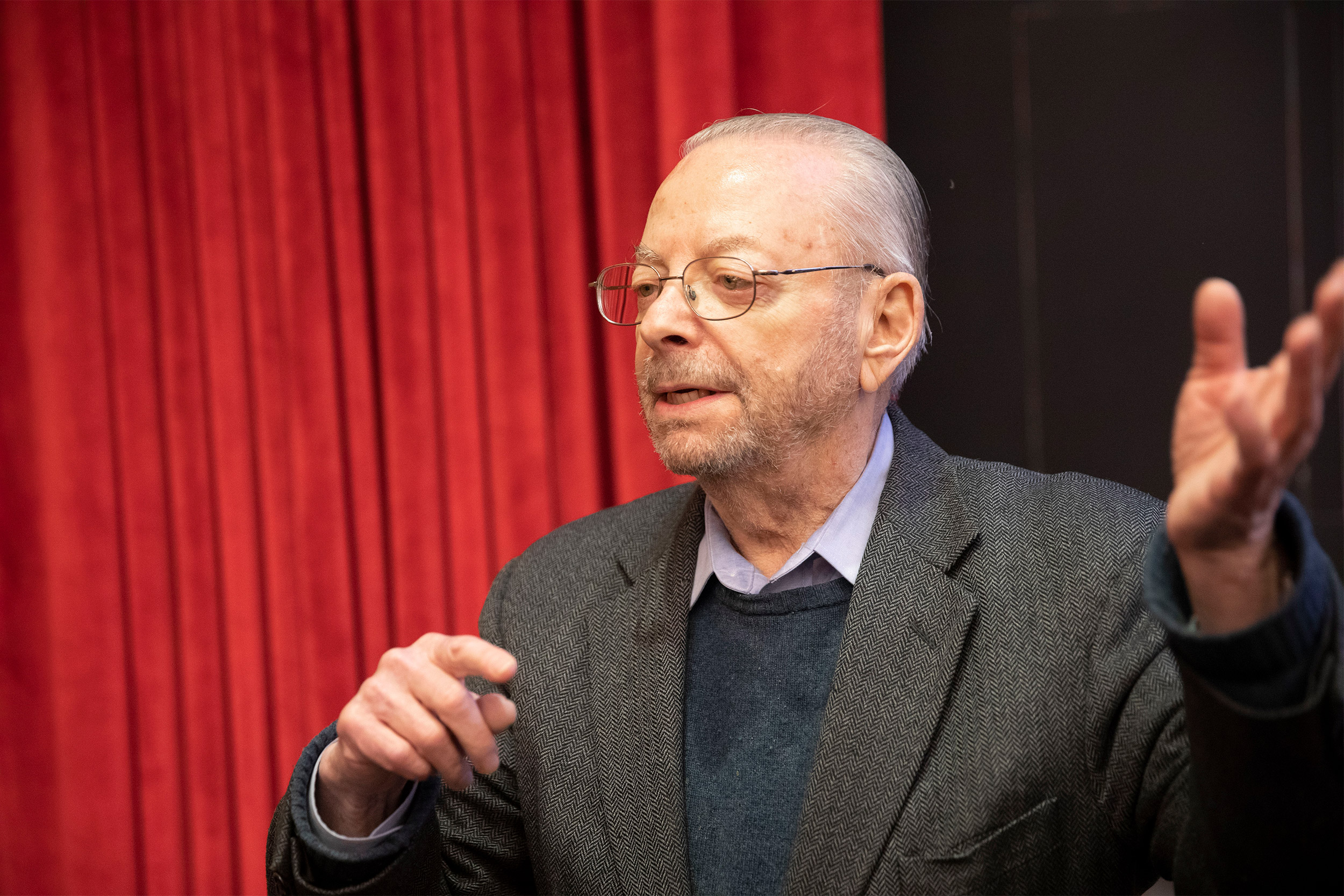
Barry Bloom spoke at a Monday evening panel discussion on COVID-19, the illness caused by the new virus.
Photos by Kris Snibbe/Harvard Staff Photographer
So how bad is coronavirus in U.S.? We don’t know yet
Chan School, Medical School officials say slow rollout of tests hampers ability to assess spread and severity of disease
This is part of our Coronavirus Update series, in which Harvard specialists in epidemiology, infectious disease, economics, politics, and other disciplines offer insights into what the latest developments in the COVID-19 outbreak may bring.
The good news about epidemics is that they all eventually end, Harvard Chan School immunologist Barry Bloom said Monday evening. The bad news is, you have to move fast to contain them.
“The world will not come to an end, but … speed is of the essence and in all the major epidemics I’m aware of in modern times, nobody acted quickly enough,” said Bloom, the Joan L. and Julius H. Jacobson Research Professor of Public Health and former Chan School dean.
Bloom’s warning came amid a growing national outcry about the slow pace of testing for the new coronavirus. Harvard Chan School epidemiologist Marc Lipsitch said at an event earlier in the day that U.S. national testing has been “orders of magnitude lower” than that of a single Chinese province and is likely masking the true extent of the epidemic here, including the possibility — if undetected mild cases are widespread — that the virus is less deadly than now thought.
U.S. cases have been rising rapidly in recent days. Several cases with no connection to international travel have raised concerns that the virus has been spreading for weeks in some communities. The official U.S. count on Tuesday stood at 108 cases in 12 states and six deaths, according to the U.S. Centers for Disease Control and Prevention. An additional three deaths were reported Tuesday afternoon by the Washington state Department of Health, bringing the overall total in the nation to nine. New cases have been detected in several states, including Rhode Island, New Hampshire, and New York.
Globally, the World Health Organization is reporting 90, 870 confirmed cases, with 3,112 deaths.
Bloom and Lipsitch spoke at a Monday evening panel discussion on COVID-19, the illness caused by the new virus, sponsored by the Harvard Chan School’s China Health Partnership and moderated by the partnership’s head, Winnie Yip, professor of the practice of international health policy and economics. It was the second discussion at the School on the topic Monday — experts, including Lipsitch had gathered at the Forum at the Harvard T.H. Chan School of Public Health for a lunchtime webcast discussion of COVID-19’s spread.
Harvard Chan School epidemiologist Marc Lipsitch (right) and Barry Bloom.
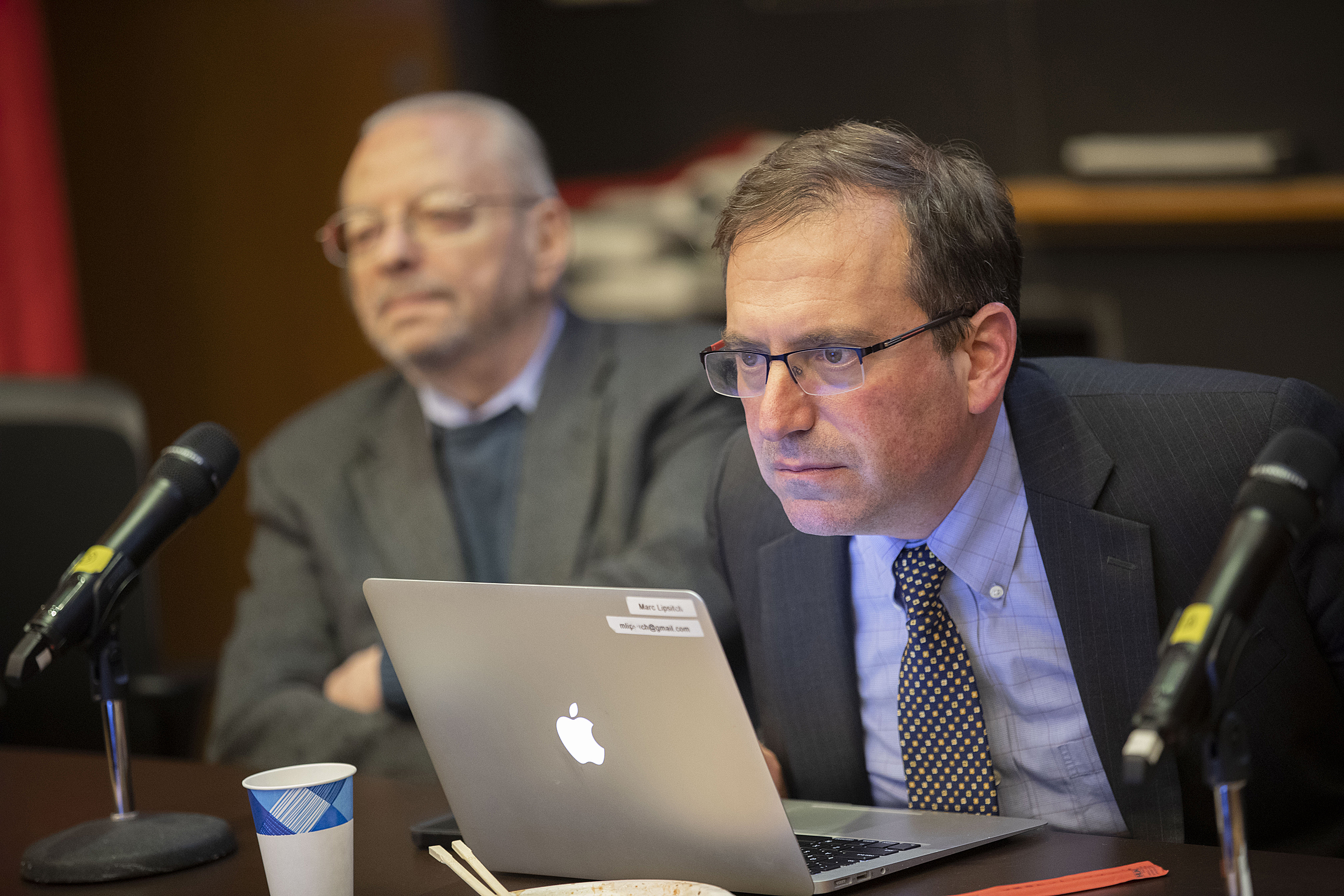
Separately, almost 80 biomedical researchers from around the Boston area gathered at Harvard Medical School to meet Chinese collaborators via video conference and discuss research priorities for the newly-announced partnership with the Guangzhou Institute for Respiratory Health. The $115 million, five-year effort seeks to pair the Boston region’s biomedical expertise with the knowledge and experience of Chinese biomedical researchers. Participants worked to set research priorities including the virus’ epidemiology, pathology, diagnostics, therapeutics, vaccines, and best practices in managing the illness.
At the afternoon forum event, Lipsitch said a key next step in the U.S. is expanding testing for the contagion. That will help to understand the true extent of the virus’ spread and its true nature. He compared the epidemic to an iceberg, with the most severe cases — those who have died or sought medical care or been tested — at the iceberg’s tip. Scientists now need to better understand the unseen, underwater portion — a potentially large number of mild and moderate cases, though with some severe ones and deaths attributed to other causes as well — to better grasp both how easily it spreads and how deadly it is.
The U.S. government has announced a dramatic expansion of testing, but Lipsitch said it would likely take weeks to put in place.
“[The pace of testing’s] still low, and it will take weeks until we have anything like adequate testing capacity,” said Lipsitch, professor epidemiology and head of the School’s Center for Communicable Disease Dynamics.
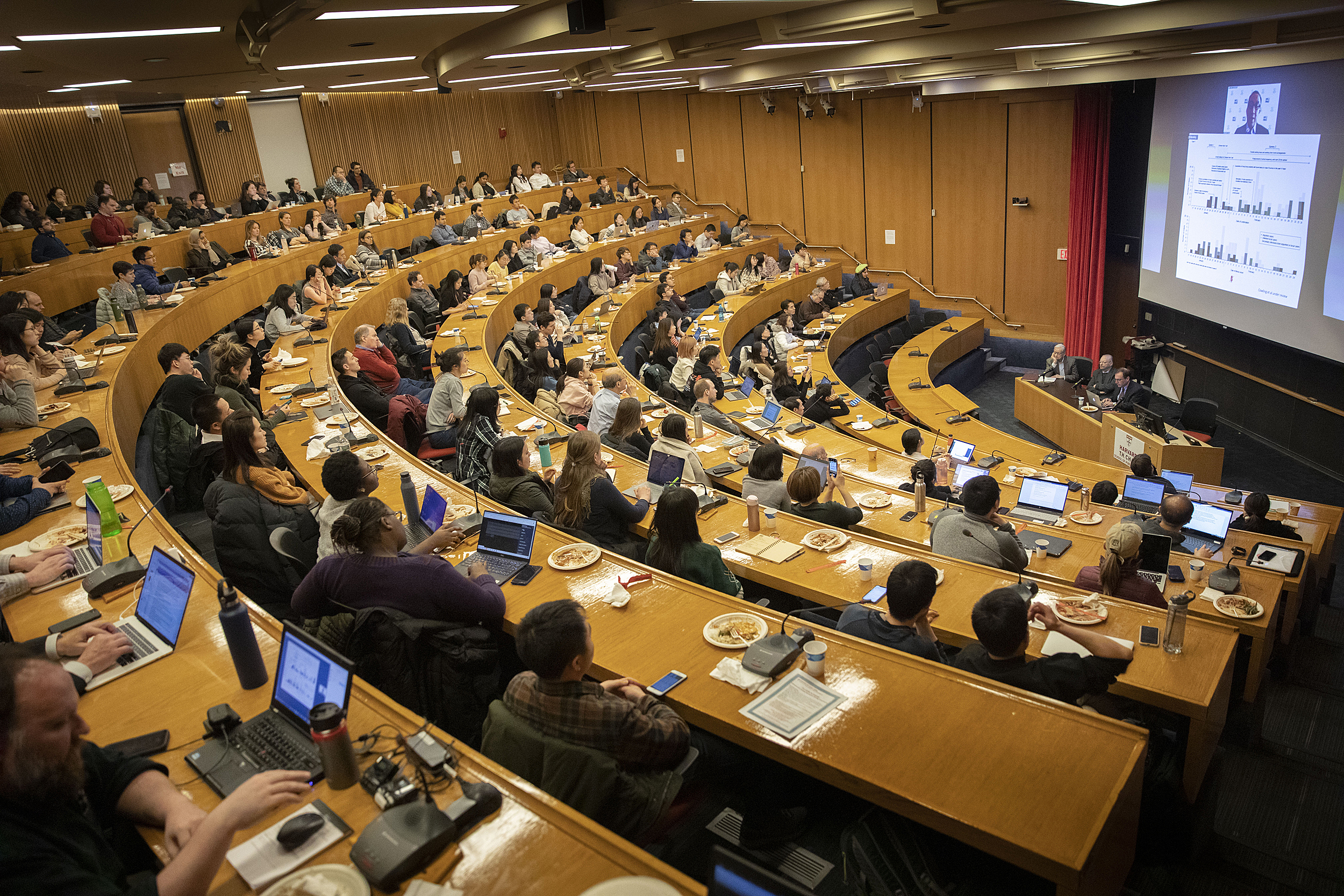
If the unseen reservoir of those infected by the virus who’ve recovered on their own is larger than expected, it could reshape scientists’ understanding of the disease as one less deadly than the currently estimated 2 percent death rate. Chinese researchers, Lipsitch said, are now conducting serological studies — searching for antibodies to the virus in blood samples of the general population — to answer that question.
With a vaccine against the contagion likely over a year away, basic public health and social-distancing strategies — washing hands regularly, staying home from work when sick, closing schools, reducing travel to and from stricken areas — can work, as evidenced by the steady decline in cases in China, which reported just 125 new cases on Tuesday morning. Bloom said evidence also exists that such steps were effective during the 1918 flu pandemic, which killed tens of millions around the world.
Data from that pandemic, however, also shows the tricky decision to be made in scaling back those interventions in order to restart the economy, get kids back to school and people to work, he said. Do it too soon, he said, and the epidemic can resurge.
“There’s a big decision in China and Hong Kong, and it will be a big decision in the U.S., and it’s to what extent do you put in social interventions and, more complicated, is when do you take them back?” Bloom said.
The goal of such steps, Lipsitch said, is to flatten the infection curve, which lowers numbers at the epidemic’s peak and spreads them out over a longer time. Eventually, enough people will have been infected that rising immunity in the population slows the epidemic. When successful, fewer people are infected overall, but also significant is that fewer are infected at once, making it easier for health facilities to keep up. More are infected later in the epidemic’s course, when experience and new tools likely makes treatment more successful.
“If you have a choice of getting infected today or six months from now, you’d want to wait,” Lipsitch said.



